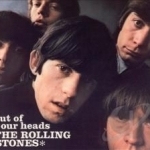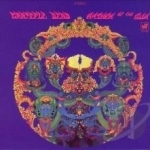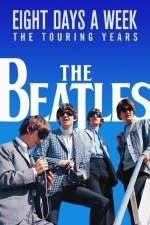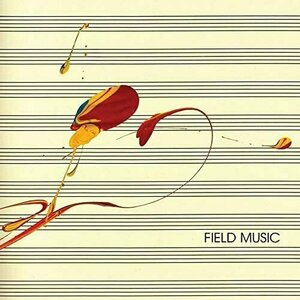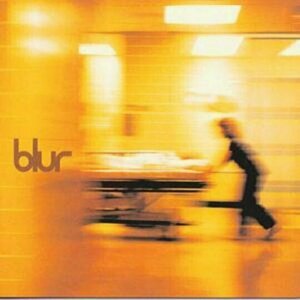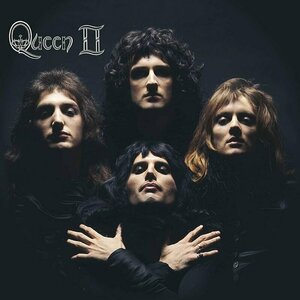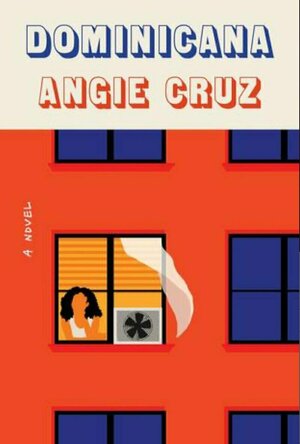Search
Search results
Johnny Marr recommended Out of Our Heads by The Rolling Stones in Music (curated)

Hooktheory I
Music and Education
App
There has never been a music book like this. Hooktheory I is a smart, fun, skill-building journey...
Lee Ronaldo recommended Anthem of the Sun by Grateful Dead in Music (curated)
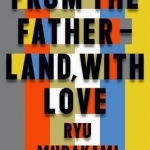
From the Fatherland with Love
Ryu Murakami, Charles De Wolf, Ralph McCarthy and Ginny Takemori
Book
An ambitious, epic dystopian novel - part political thriller and part satire. From the Fatherland,...

Coach Guitar chords tuner tabs
Music and Entertainment
App
Guitar Lessons : Get visual teaching guitar app with colors - We show you how to play popular songs...
Bob Mann (459 KP) rated The Beatles: Eight Days A Week - The Touring Years (2016) in Movies
Sep 29, 2021
A film worth getting into your life.
Reviewing documentaries is always a bit tricky, since it is often difficult to separate the quality of the film making from your emotional attachment to the subject material. In my case, my early life was saturated with Beatlemania. Although I was only 2 year’s old in 1963 at the start of it all, I had three older siblings who ramped up the excitement so much that it permeated my young mind. I still remember being vehemently “Sssshhed” since I was making too much noise during the live and ground-breaking “All you need is Love” telecast!
Ron Howard’s film focuses on “the touring years” which as depicted were truly manic, spanning from 1963 to 1966 before then skipping forward to 1969 for their final rooftop concert. This was in a time when airline travel was not the more comfortable and smoke-free environment it is today, so these worldwide trips much have been seriously grueling, even without the adoration that reached dangerous proportions when they reached their destinations.
Howard has clearly had his research team scour the world for archive clips since – whilst sensitively skipping some of the more ‘commonly seen’ materials, like the “jewelry shaking” clip – the film shows concert action I certainly had never seen before.
The film is also nicely interlaced with celebrity cameos recalling their linkage to the Fab Four’s performances (often moving, like Whoopi Goldberg’s) and the group’s “legacy” effect on modern-day art (in Richard Curtis’s case rather less convincing). One of the most striking of these is that of Sigourney Weaver recounting her attendance as a pre-teen at the Beatle’s Rose Bowl performance in LA. There, in the newsreel footage of adoring fans, is the unmistakable face of the ‘before she was famous’ actress: at least I hope it really was her (as the clip’s timing implied) and not a lookalike, since that would be really disappointing!
Also featuring – although not enough for my liking – are Paul McCartney and Ringo Starr, recounting their feelings about the events and what happened behind the closed doors of hotel rooms or – most notably – a meat truck.
What shines through is the honesty and intelligence of Lennon and McCartney, typified by the idiotic questioning of journalists, some of who had done so little homework they didn’t even know there wasn’t a Beatle called Eric! Some of the group’s off the cuff responses were priceless: “What is the secret of your success?” asks one journo. “We don’t know” quips John. “If we knew we’d form another group and be managers.”
While the film has enormous energy in its first two thirds, it rather runs out of momentum in its final reel…. a bit like the Beatles did in fact. It also has elements of gimmickry like the smoke rising from photo cigarettes which gets a tad tiresome after the tenth occurrence.
But this is a very watchable and enjoyable rock down memory lane for 50-somethings and for any fans old and young of the Fab Four’s music. Highly Recommended. Note that the documentary itself is about 90 minutes in length, with another 30 minutes of live concert music tagged onto the end post-titles (which for travel reasons I was unfortunately unable to stay for so can’t comment on).
Ron Howard’s film focuses on “the touring years” which as depicted were truly manic, spanning from 1963 to 1966 before then skipping forward to 1969 for their final rooftop concert. This was in a time when airline travel was not the more comfortable and smoke-free environment it is today, so these worldwide trips much have been seriously grueling, even without the adoration that reached dangerous proportions when they reached their destinations.
Howard has clearly had his research team scour the world for archive clips since – whilst sensitively skipping some of the more ‘commonly seen’ materials, like the “jewelry shaking” clip – the film shows concert action I certainly had never seen before.
The film is also nicely interlaced with celebrity cameos recalling their linkage to the Fab Four’s performances (often moving, like Whoopi Goldberg’s) and the group’s “legacy” effect on modern-day art (in Richard Curtis’s case rather less convincing). One of the most striking of these is that of Sigourney Weaver recounting her attendance as a pre-teen at the Beatle’s Rose Bowl performance in LA. There, in the newsreel footage of adoring fans, is the unmistakable face of the ‘before she was famous’ actress: at least I hope it really was her (as the clip’s timing implied) and not a lookalike, since that would be really disappointing!
Also featuring – although not enough for my liking – are Paul McCartney and Ringo Starr, recounting their feelings about the events and what happened behind the closed doors of hotel rooms or – most notably – a meat truck.
What shines through is the honesty and intelligence of Lennon and McCartney, typified by the idiotic questioning of journalists, some of who had done so little homework they didn’t even know there wasn’t a Beatle called Eric! Some of the group’s off the cuff responses were priceless: “What is the secret of your success?” asks one journo. “We don’t know” quips John. “If we knew we’d form another group and be managers.”
While the film has enormous energy in its first two thirds, it rather runs out of momentum in its final reel…. a bit like the Beatles did in fact. It also has elements of gimmickry like the smoke rising from photo cigarettes which gets a tad tiresome after the tenth occurrence.
But this is a very watchable and enjoyable rock down memory lane for 50-somethings and for any fans old and young of the Fab Four’s music. Highly Recommended. Note that the documentary itself is about 90 minutes in length, with another 30 minutes of live concert music tagged onto the end post-titles (which for travel reasons I was unfortunately unable to stay for so can’t comment on).
Marc Riley recommended Measure by Field Music in Music (curated)
Rob Halford recommended Queen II by Queen in Music (curated)
ClareR (6054 KP) rated Dominicana in Books
Sep 8, 2020
Dominicana is the story of 15 year old Ana. Her parents forcibly (well, they don’t give her the option NOT to) marry her off to a much older man, Juan, and they move to New York where she knows no-one else and doesn’t speak any English. I can’t imagine how isolated this child must feel. Ana grows up during this coming of age story. She must learn how to ‘manage’ her husband, who hits her on more than one occasion. She is completely at his mercy, living in a run down flat, told not to let anyone in unless they have an appointment to buy knock-off suits (I tried to think of a better phrase for these suits, but this is all I’ve got!), not to go anywhere except the supermarket by herself, and she’s given no opportunity to learn English - isolating her further.
Probably the best thing that happens to her is when Juan returns to the Dominican Republic to see his brother and sort out family money and properties. Juan’s younger brother, Cesar, stays to look after her and encourages her independence. I wish this part could have been longer. She starts to learn English, makes her own money, and probably unwisely forms an attachment to Cesar. She finds out she’s pregnant just before Juan goes to the Dominican Republic, and seems reluctant to tell him. And I can’t blame her. He really has no place marrying a 15 year old child, least of all making her pregnant.
I liked the way that this story was set against real historical events: Malcolm Xs assassination, the US troops going into Vietnam, the immigration bill where Hispanic people began to migrate to the US in greater numbers, and even more pop-culture events like The Beatles playing for the first time in New York and Dominican players in baseball. These events really helped to paint a fuller picture of Ana’s life. It’s easy for me to sit at home reading a book in 2020, saying that a 14/15 year old should never be able to marry a man much older than she is and be taken to a foreign country, but this book is set in 1965-66. It was a different world then (although I should say that this does still happen in some countries). This is what makes Dominicana such an enthralling read.
Many thanks to the publisher, Flatiron Books, and NetGalley for my copy of this book.
Probably the best thing that happens to her is when Juan returns to the Dominican Republic to see his brother and sort out family money and properties. Juan’s younger brother, Cesar, stays to look after her and encourages her independence. I wish this part could have been longer. She starts to learn English, makes her own money, and probably unwisely forms an attachment to Cesar. She finds out she’s pregnant just before Juan goes to the Dominican Republic, and seems reluctant to tell him. And I can’t blame her. He really has no place marrying a 15 year old child, least of all making her pregnant.
I liked the way that this story was set against real historical events: Malcolm Xs assassination, the US troops going into Vietnam, the immigration bill where Hispanic people began to migrate to the US in greater numbers, and even more pop-culture events like The Beatles playing for the first time in New York and Dominican players in baseball. These events really helped to paint a fuller picture of Ana’s life. It’s easy for me to sit at home reading a book in 2020, saying that a 14/15 year old should never be able to marry a man much older than she is and be taken to a foreign country, but this book is set in 1965-66. It was a different world then (although I should say that this does still happen in some countries). This is what makes Dominicana such an enthralling read.
Many thanks to the publisher, Flatiron Books, and NetGalley for my copy of this book.
